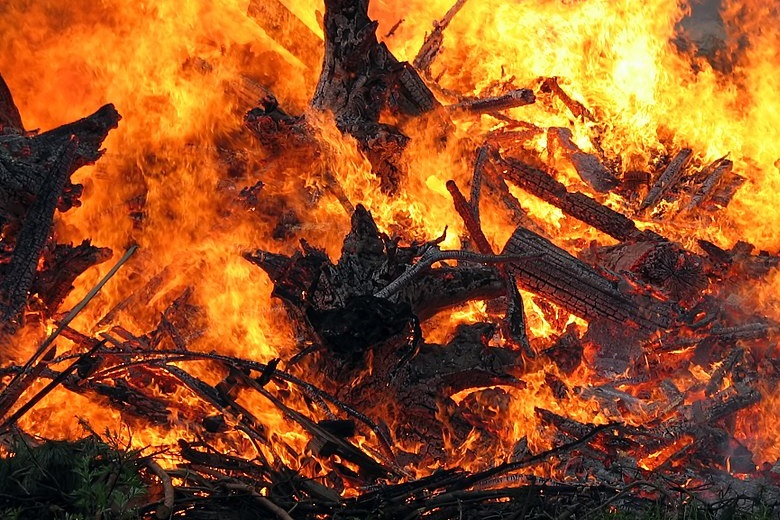
Forty Thousand Acres of Union County Remain Outside Fire Protection Districts
By Garrett Christensen on Wednesday, September 7th, 2022 in More Top Stories Northeastern Oregon News
UNION COUNTY – In an emergency, dialing 911 is quick, simple and ensures that the correct teams are sent where they need to go and can find who they need to help. However, the actual process of coordinating and dispatching EMS teams, notably firefighters, is complex and relies on a clear understanding between agencies of who protects what area. Things get even more complicated when trying to manage massive areas that, legally, aren’t protected by anyone. Union County is currently facing this issue, with some forty thousand acres of rural land sitting outside of any of the counties fire protection districts or Oregon Department of Forestry jurisdiction.
These unprotected areas, by definition, do not receive fire protection services in the event of an emergency. Chief Craig Kretschmer of the La Grande Rural Fire Protection district noted that many of these property owners or residents may also be unaware of their status outside the districts, commenting, “there are houses that don’t have any fire protection whatsoever. They may not know they don’t have fire protection where they’re at. They may be a renter who has no idea a fire truck isn’t coming to help mitigate their emergency.”
This puts landowners in a precarious situation as, officially, all fire suppression and the responsibility for damages falls exclusively on them. Nick Vora, search and rescue coordinator for Union County SAR, noted, “if there’s a fire, it is the landowner’s responsibility to put that fire out, and not just their physical responsibility but their financial responsibility. If that fire burns off their property onto someone else’s, natural or human caused, they own it.”
This isn’t to imply that firefighters are happy with leaving Union County residents to fend for themselves but responding to unprotected lands has its own consequences. From an obligational standpoint, it leaves district members vulnerable if assets are deployed to remote, unprotected areas. Further, it sets a bad precedent that paying into a fire protection district is redundant as the crews will respond regardless. Chief Kretschmer commented:
“Say there’s a house out on Peach Road or some of those out in the middle of the valley that aren’t protected, and we send all our people out there and then the mill catches on fire or the school catches on fire and we’re not here, we’re out fighting a fire that doesn’t even pay into our district. It puts us in a tough spot, but we want to go out and help people and mitigate the emergency.”
Leaving a fire to burn, however, has the potential to cause damages and disruption well in excess of any singular unprotected property, especially if it could spread or work its way into the timberline. As such, plans are being made by the Union County Fire Defense Board for potential annexation boundaries of unprotected property into nearby districts. In its current iteration, annexation will be voluntary but will allow for a smooth transition for landowners into the most appropriate district, “that way people aren’t out shopping for fire protection,” as put by Kretschmer.
In the meantime, the board is hoping to put out additional information and education opportunities for unprotected landowners and provide them with available options for annexation. According to La Grande Fire chief Emmitt Cornford, the city is also requiring any property within the growth boundary to annex into the La Grande district or have some form of fire protection agreement before building. Chief Kretschmer recommended that Union County residents who are unsure if their property is protected reach out to their nearest fire department or contact the Oregon Department of Forestry. Payment to ODF and or rural fire protection districts can be found on tax reports. Questions can also be directed to Vora’s office at 541-963-1009.

